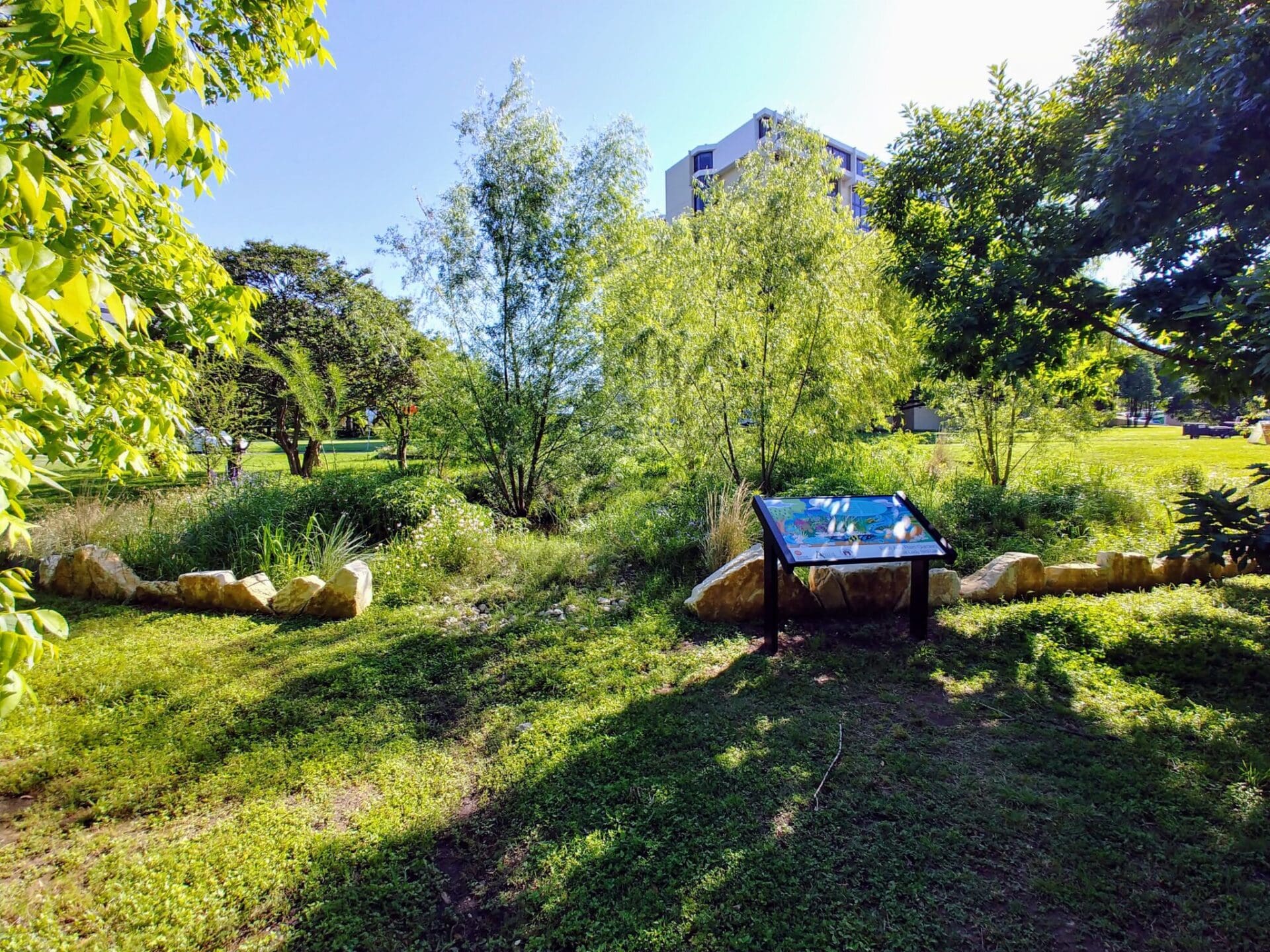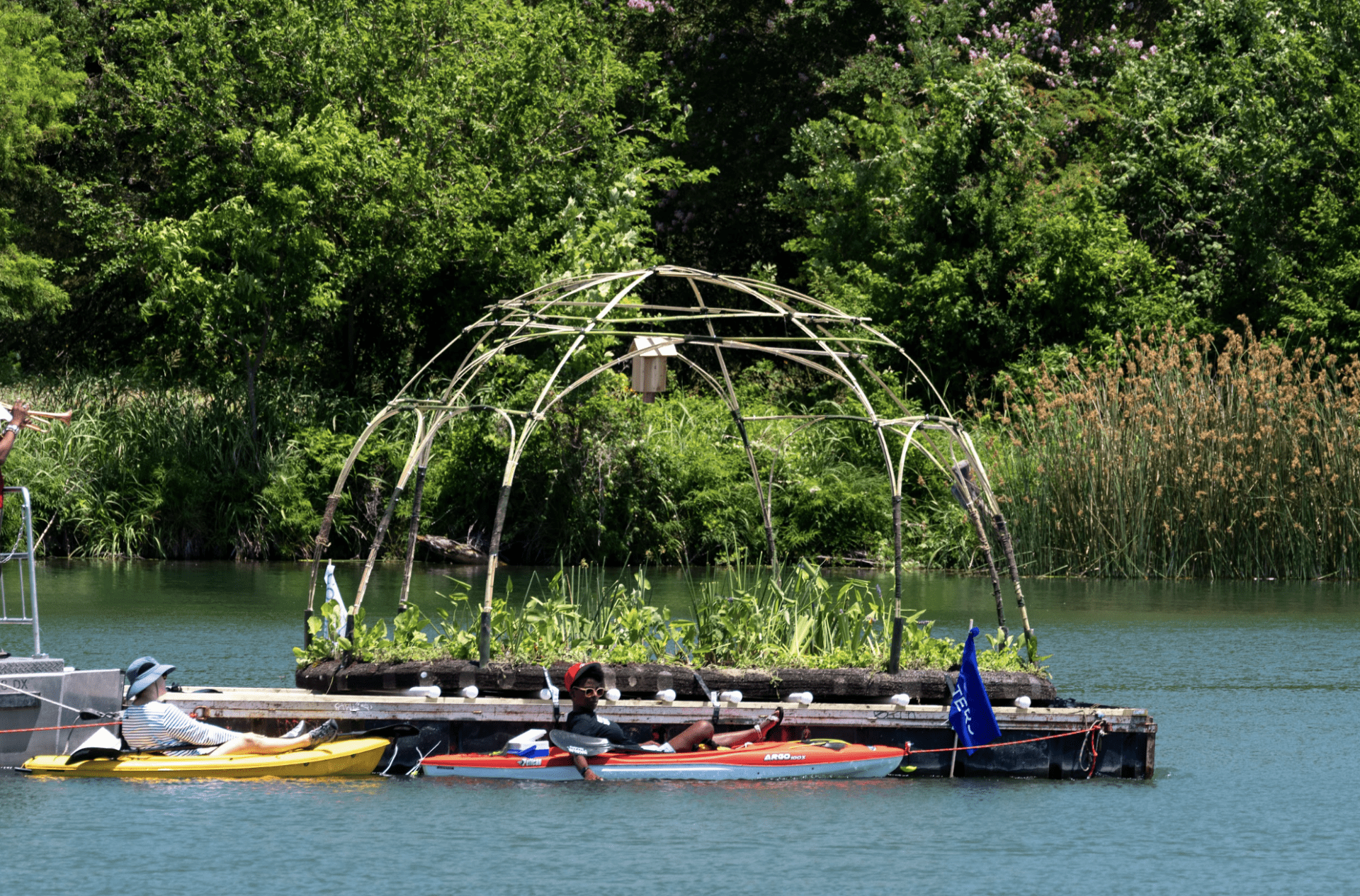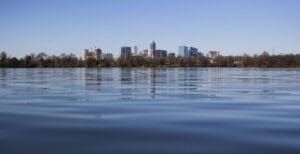
The living shoreline restoration project at Lakeshore Park is a collaborative restoration effort on Lady Bird Lake in downtown Austin bringing together private and public resources to improve public land through green infrastructure and sustainable restoration. Participating partners include The Trail Conservancy, City of Austin PARD Forestry, City of Austin Watershed Protection Department and local volunteer groups.
Lady Bird Lake and the natural areas surrounding it are a part of a unique urban ecosystem that provides significant ecological services to the City of Austin. That system is made up of plant communities that exist in the upland floodplain, the riparian shoreline, the saturated wetlands, and the aquatic environment. However, these habitat types are bordered and fragmented by urban land, mowed lawns, and impervious surfaces. The task of maintaining continuity in the natural land-water interface can be difficult both geographically and as a paradigm for sustainable land management. The living shoreline restoration project at Lakeshore Park aims to address issues across multiple habitat types through a collection of interconnected restoration practices that will maximize ecological benefit.
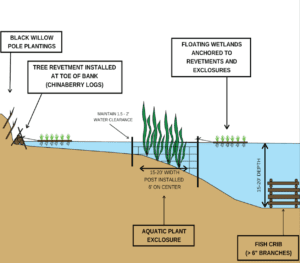
Restoration Methods
Shoreline Stabilization
- Tree Revetments: Unlike a traditional revetment, tree revetments are constructed from rows of interconnected trees attached to the toe of a streambank to reduce flow velocities along eroding streambanks, trap sediment, and provide a surface for plant establishment and erosion control. Benefits include lower cost, longterm stability, slowing of stream flow, and providing valuable in-stream habitat for aquatic organisms. Materials for the revetments were harvested on-site from Chinaberry and Chinese Tallow trees and packed with excess woody brush. Willow poles were also used to stake and stabilize the revetment.
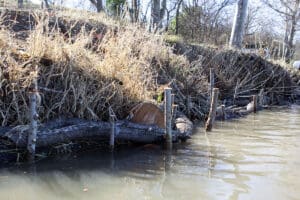
Habitat Expansion
- Plant exclosures: Plants in aquatic systems are often overlooked as critical components of healthy
 ecosystems. Aquatic and riparian plants can provide valuable invertebrate, fish and wildlife food and cover, improve water clarity and quality, reduce shoreline erosion and sediment re-suspension, and help prevent spread of nuisance exotic plants. These qualities contribute significantly to ecosystem health and function, which in turn improves the value of the lake as a natural resource. Exclosures were installed to protect these plants from herbivores.
ecosystems. Aquatic and riparian plants can provide valuable invertebrate, fish and wildlife food and cover, improve water clarity and quality, reduce shoreline erosion and sediment re-suspension, and help prevent spread of nuisance exotic plants. These qualities contribute significantly to ecosystem health and function, which in turn improves the value of the lake as a natural resource. Exclosures were installed to protect these plants from herbivores.
- Floating wetlands: The floating wetland structures will provide additional space to increase the extent of aquatic and emergent plantings where exclosures are not possible due to water depth. These structures increase the diversity of the site, increase wildlife habitat, and improve water quality.
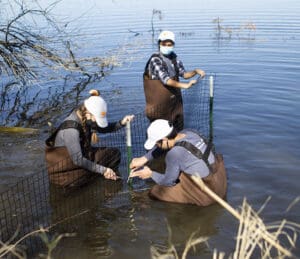 ecosystems. Aquatic and riparian plants can provide valuable invertebrate, fish and wildlife food and cover, improve water clarity and quality, reduce shoreline erosion and sediment re-suspension, and help prevent spread of nuisance exotic plants. These qualities contribute significantly to ecosystem health and function, which in turn improves the value of the lake as a natural resource. Exclosures were installed to protect these plants from herbivores.
ecosystems. Aquatic and riparian plants can provide valuable invertebrate, fish and wildlife food and cover, improve water clarity and quality, reduce shoreline erosion and sediment re-suspension, and help prevent spread of nuisance exotic plants. These qualities contribute significantly to ecosystem health and function, which in turn improves the value of the lake as a natural resource. Exclosures were installed to protect these plants from herbivores.